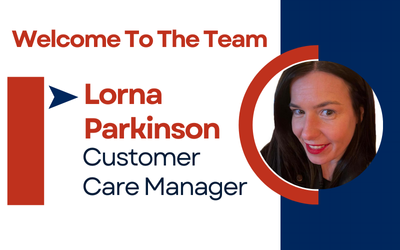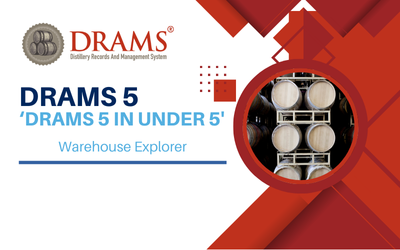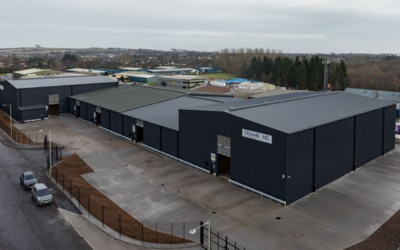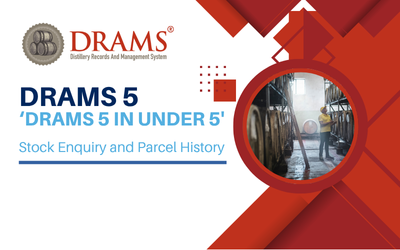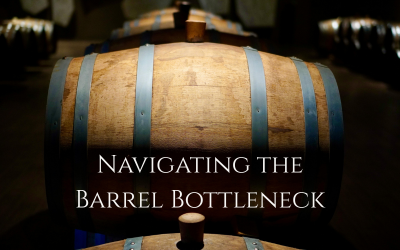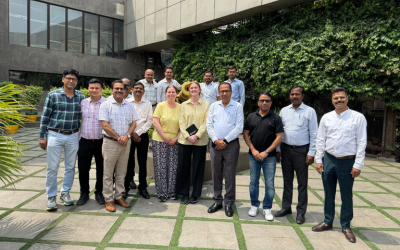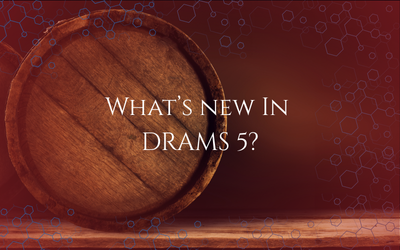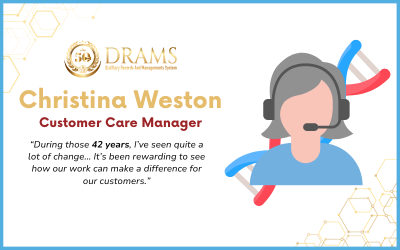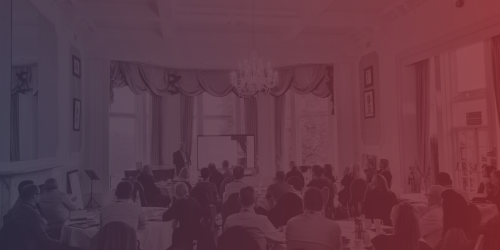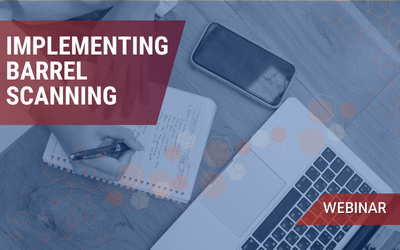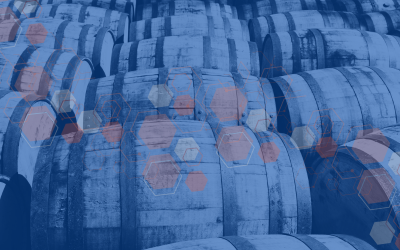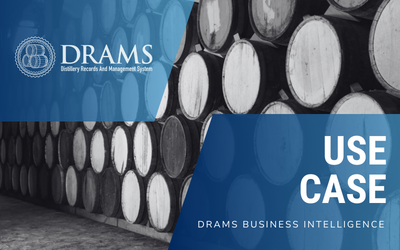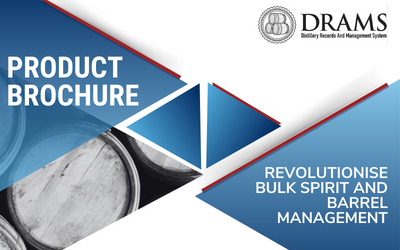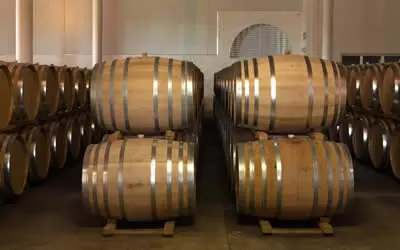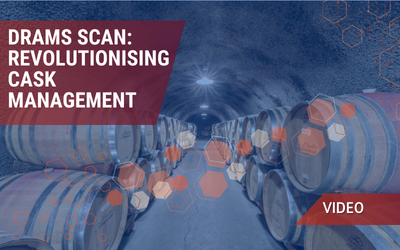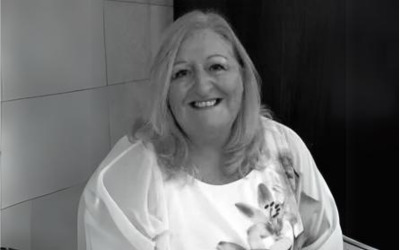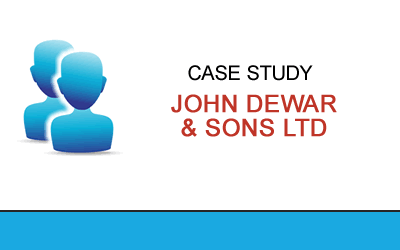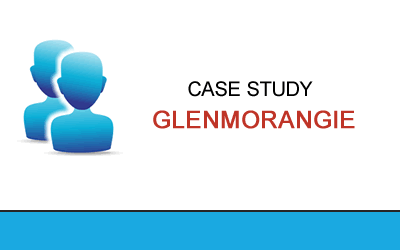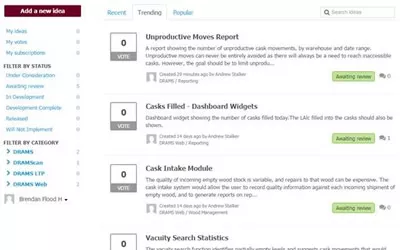The past few years have seen a remarkable rise for Glenmorangie, as the company goes from strength to strength. Named repeatedly as a ‘Hot Prospect Brand’ by Impact magazine, Glenmorangie is the fastest growing Whisky brand. Indeed, following a distillery expansion in 2012, the company now has a potential total capacity of over 6 million litres per year – the culmination of a journey that began back in 1843 when the Glenmorangie distillery was first founded.
Part of this success has been put down to the company’s fervent commitment to and passion for innovation. So, to find out more about what this entails, we spoke to Rab Sorman, Whisky Stocks and Blending Manager.
An expert’s tale
Having been with Glenmorangie for some 20 years, the traits that have made Rab such an integral part of the company’s operations are immediately obvious. His enthusiasm for and understanding of the complexities of the business are evident in abundance as he talks through his whisky-odyssey.
“I came into Glenmorangie after 10 years working in the whisky industry,” Rab explains. “I started out looking after the spirits and the bottling side of things. Of course, every whisky company is unique in the way they deal with specific processes, such as chill filtration. Glenmorangie is no different.
“For the last 10 years, though, I’ve been looking after the stock we hold – which means keeping a handle on everything from our bottling plans and distilling plans, through to our barrels and cask storage, warehouse management and also the financial side of things, too.” Rab continues.
Complex and challenging it may be, but it is clear that Rab relishes this part of the role: “Every day is different, which makes the job very interesting,” he says. “You have to cost and plan everything effectively. Some days you’ll be budgeting; others planning: both day-to-day and week-to-week, but also longer-term, too. Then other days you’re doing something completely different: sharing spreadsheets with the bottling department on which spirits are needed which day, for example.”
The right tools for the job
With so many elements to consider, from the number of times a cask has been filled, through to when spirits must be reduced or filtered, and the tankers required (as well as where and when they are needed), it’s very easy for minor problems to impact the entire supply chain if not handled correctly.
For example, Rab notes how a “minor hiccup in the bottling hall” can impact a wide range of other processes. Because of this, it is vital that Glenmorangie have someone able to focus on avoiding such issues.
“Meticulous planning is vital,” Rab explains. “From the head office and on to the distilleries and bottling plant, processes have to be streamlined.”
But as much as firms need great employees like Rab, those employees themselves also have needs – and in this instance that refers to the tools that enable them to do their jobs effectively; streamlining processes and making their working lives easier wherever possible. It is for this reason that Glenmorangie introduced the Distillery Records and Management System (DRAMS) in 2011/12, which Rab and his colleagues have been using with enthusiasm since:
“With DRAMS I have a handle on everything we own,” Rab explains. “I know where every spirit is, what specific cask it is in, what it’s doing, how it’s maturing, and how it fits into the bigger picture of the entire supply chain. It gives a holistic overview. This knowledge plays a crucial role in informing our plans and future blends – so it’s incredibly important from a strategic point of view.”
“But it’s not just me – there’s a whole team doing great work,” Rab adds. “The system helps everyone from those in finance to those picking stock for vatting and also those bottling the spirits. You can check maturation losses, create reports and reconcile information with original accounts. So it’s extremely useful.”
On a day-to-day basis, Rab uses the data extraction tool in DRAMS, noting that the ability to select the data fields that he wants to extract as perhaps his favourite part of the system: “If you’re checking spirit type balances, for example, within the data extraction function you can select the required data fields you want, such as age, filling date, basically as many fields as you like – which means it’s customisable to your needs. It’s ideal for me because it helps filter information which is incredibly important when it comes to picking recipes and blends.”
“Thanks to DRAMS, I know exactly what stock I have left – I couldn’t do this in any other system. I would have to take all the stock, put it into a spreadsheet, and delete what wasn’t relevant, which would be so time consuming,” Rab continues. “The filters are so useful because they save time and only show me what I need to see. ”
The importance of modern technology
Of course, as with any business, the decision to introduce a new piece of software or technology has to be taken carefully – and with good reason. But Rab explains that in this instance the business case was fairly simple, with a need to invest in a modern, up-to-date system to support bulk management and planning:
“The bulk stock system we used previously had been in operation for years and was out of date,” Rab says. “There was no longer any support, which meant our IT guys had to try to rectify issues by themselves, by actually going into the software foundations . This is obviously risky because it means interfering with the programming. So we understood the system was no longer really suitable.”
Having used the new DRAMS system for four years or so, does Rab believe the decision to migrate to this new software has been justified? “Yes, definitely,” he insists. “We’re impressed with the package and noticed the benefits immediately, especially how much more accurate the reports are. People also quickly picked up how to use the system and now everyone is settled into it.”
A smooth transition
Of course, any transition from one software system to another presents various challenges, so it’s interesting to hear Rab recall how smooth the installation process for DRAMS was: “There was a huge amount of data to transfer and manage,” Rab explains. “But because the DRAMS engineers worked closely with our own IT guys, the transition was smooth.”
“It also helped that the DRAMS team provided training days, because you couldn’t do without them,” Rab adds. “It’s so important you work closely with your supplier and to have this training.”
And it is also important that working partnership continues long after training finishes. As Rab explains: “It’s very important to have that support after the installation and training is over,” he says. “For our team it’s good to know we are easily able to contact DRAMS via the helpline, and have any issues or queries resolved so quickly. It’s very different to the old system, where you’d have to find these answers yourself – issues are resolved within minutes, so it saves us a lot of time.”
User group
Along with regular meetings and support calls with the DRAMS team, Rab and his colleagues also have the opportunity to attend the annual DRAMS User Group – an event Rab has attended every year since the system was first installed, and an opportunity he clearly appreciates:
“I always find it useful,” he says. “And they seem to become even more useful the longer you use the system. As your understanding of the system grows, you start to know which questions you want answered by the experts at the meetings – so you can really optimise your time.”
“It’s great to pick the brains of Graham (DRAMS Product Manager) and Brendan (DRAMS Team Manager)” Rab adds. “And the user group also gives other really useful insight into the extra features and functionality of the system. Of course, it’s also useful from the perspective of a two-way conversation, because the event provides an opportunity to make suggestions for the system and provide feedback.”
It’s clear from speaking with Rab that one of the keys to a successful implementation of any software solution is to build and maintain a positive business relationship with the technology supplier. And it’s interesting to hear Rab explain how a big part of maintaining this relationship comes down to communication:
“Our relationship with the DRAMS team is very good, and we know they’ll always be there to support us” he says. “They’re very informative of everything that’s going on and future developments with the system, which is important. And they do this with regular newsletters and updates. At the same time, it’s two-way communication – so they’re always seeking our feedback and insight from a user perspective.”
A changing landscape
The feedback provided by Rab and his colleagues has a direct impact on the core DRAMS software – informing product development as the DRAMS team look to ensure the system takes into account the fluctuating, shifting trends and working practices within the whisky industry.
Here, there is perhaps no one better placed to discuss some of these changes, since, over the course of his own career, Rab has seen so many changes and developments take place within Glenmorangie – and within the whisky industry as a whole. So how does this knowledge affect the way he plans and manages the company’s spirit stocks?
“The one thing you have to expect is the unexpected,” Rab explains. “Within the whisky industry, you can sit down and work out a perfect filling plan; but you’re always going to have to contend with reality. You have to take reality into your plans and forecasts!”
“Like any industry, the wider worldwide economic climate is felt very keenly by all whisky companies and professionals,” Rab continues. “So, for example, the recent downturn in China has made life difficult, and put an end to the boom the Scotch whisky industry had been experiencing, with lots of organisations building and investing in new facilities and distilleries.”
Ever keen to see the positive, Rab explains that the situation hasn’t only had negative effects: “In a way, the downturn was a good thing, because it has made things more manageable,” he says. “The cost of casks was horrendous, because demand was so huge. And this was leading to unreasonably high prices – perhaps an increase of as much as 35% in some cases. So now we’ve reached a plateau, it’s actually quite useful for us. It helps redress the balance.”
“Obviously you can see the net effect of the downturn on yearly production figures, but it absolutely isn’t doom and gloom,” Rab explains. “You just need to look at the bigger picture – you can see where we’ve come from, gradually increasing production thanks to distillery expansion in 2012. We still have the ability to use our full capacity, which gives us massive flexibility. Just as the market has ‘plateaued’ a little now, it will likely soon be back on an upward trend and we’ll need to utilise our full potential capacity. So the future is very bright from that perspective.”
Looking to the future
Rab’s positive attitude here is evident again as we look at what the future holds for both him and Glenmorangie. It seems clear that a passionate commitment to innovation and invention is at the heart of both Rab’s and Glenmorangie’s working ethos – and this will see Rab and his colleagues tasked with coming up with new spirit expressions each year, alongside continued experimentation with different casks and spirits.
“Looking to the future it’s very exciting,” Rab says. “We’re very inventive, and have always been looking to invent and create new blends and so on. For example, we were the first company to produce a wine-finished spirit. And it’s these types of inventions and innovations that we strive for. It’s an opportunity to be creative. You can take samples from distilleries and play about with them in the lab – it means you can invent potential game changers!”
Conclusion – a toast to creativity and innovation
Clearly, Glenmorangie’s commitment to innovation and investment in modern technology has played a key role in the firm’s successes in recent years. As Rab says, “the DRAMS software will be increasingly important from a strategic point of view.”
But of course the company’s success is also down to the excellent hard work, and extensive knowledge and skill set of employees like Rab. Indeed, with such workers at the heart of operations, it seems certain that Glenmorangie will continue to go from strength to strength, ensuring its spirits also retain their acclaimed flavour. And with Rab’s enthusiasm, it looks as though the company will have a creative year:
“Of course it can be complicated at times; but that’s one of the reasons I enjoy the job so much,” Rab says. “There’s a lot of thinking involved. It’s not the soft drink industry – it isn’t as easy to produce or plan, with so many different factors influencing the distillation process, and so on. But this is what makes it an art form, in a way – you can do all sorts of things with whisky; you can re-rack the spirit, you can reinvigorate poor stock. You can get creative!”
To specify exactly, with any degree of accuracy, what it is that gives a certain flavour of whisky is, of course, impossible. Yet when key industry employees like Rab are given the tools they need to do their jobs effectively, the possibilities are endless.



